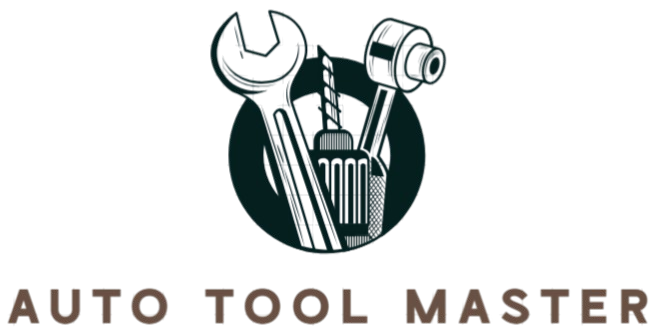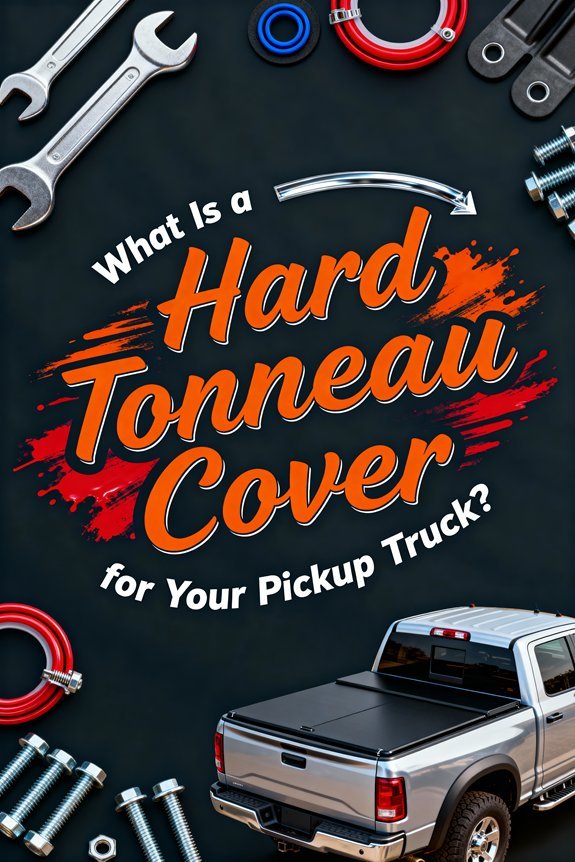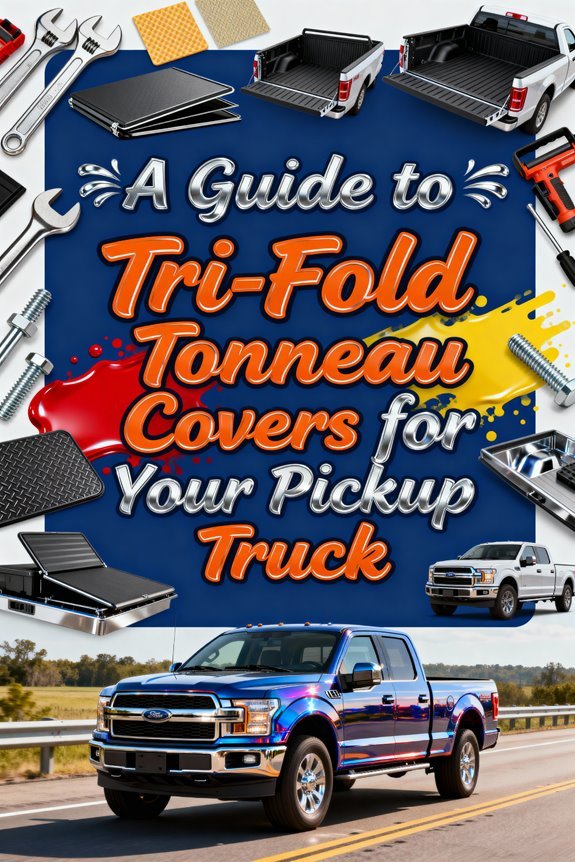To install a truck bed tonneau cover, start by cleaning the bed and wiping surfaces with rubbing alcohol. Position weather stripping along bed edges with the bulb side up, then align and secure the bed rails using clamps distributed evenly at front, middle, and rear sections. Mount the cover panels flush with rails, ensuring the front hinge faces the cab. Test seal integrity with water and verify tailgate clearance—tri-fold designs typically need 20 inches. Adjust tension to prevent sagging, and you’ll find additional techniques to optimize performance and longevity.
Gather Tools and Prepare Your Truck Bed
Before installing your tonneau cover, you’ll need to confirm your truck bed is properly prepared and all installation components are readily accessible. Begin by inspecting the bed surface for dirt, debris, and rust that could compromise installation integrity. Clean thoroughly with water and mild detergent, then dry completely to prevent moisture issues. Remove existing accessories or obstructions.
Unbox your tonneau kit and verify all components—rails, clamps, bolts, and cover—against the manufacturer’s list. Implement proper tool organization by sorting wrenches, screwdrivers, measuring tape, and drill on a tray. Observe safety precautions by wearing gloves and eye protection throughout installation. Check for bed damage affecting bracket mounting, and confirm adequate workspace lighting for precise alignment verification. Have a socket set available as it will be necessary for securing clamps and bolts during the installation process. The installation typically requires no drilling or permanent modifications, as most tonneau covers use a clamp system that secures directly to the truck bed rails. With proper preparation and following the manufacturer’s instructions, most soft roll-up covers can be installed efficiently, making the process straightforward for DIY enthusiasts.
Install Weather Stripping and Seal Strips
Once you’ve confirmed your truck bed is clean and all components are accounted for, weather stripping installation becomes your primary focus for ensuring a watertight seal. Begin by wiping application surfaces with rubbing alcohol to remove oils and contaminants. If you have a spray-in bed liner, lightly scuff the surface with steel wool to improve adhesive bonding.
Position seal strips with the bulb side facing up along the bed floor edge where it meets the tailgate. On vertical bed sides, orient the bulb inward, conforming to sheet metal curves. Peel the adhesive backing incrementally while aligning the stripping to prevent wrinkles.
Press lightly initially, then close the tailgate to check for gaps. Pay special attention to corners and joints where water is most likely to penetrate. Different weather stripping materials offer varying compression levels—select appropriate thickness for ideal rail fitment and sealing performance. Proper weather stripping works in conjunction with your tonneau cover’s weather resistance features to protect cargo from the elements. Ensuring the cover is securely closed will also prevent water and soap from entering and damaging internal mechanisms during washing.
Position and Attach the Bed Rails
With the weather stripping properly seated, you’re ready to establish the structural foundation of your tonneau cover system through precise rail placement. Begin by positioning the rails at the front and rear bed edges, ensuring compatibility with your utility track system if present. Use measuring tape for accurate rail alignment along the bed’s length, verifying all components match your cover type—whether soft roll-up or hard folding.
Identify designated mounting points and assemble clamps per manufacturer specifications. Secure rails using proper mounting techniques, following a specific tightening sequence for even pressure distribution. Confirm each support point firmly attaches to the bulkhead and rear area. Check clearance requirements and verify alignment regularly throughout installation. Account for bed liners or coatings that may affect fitment before finalizing bolt and clamp tightening. Distribute clamps evenly along both sides of the truck bed to ensure secure installation and proper tension. Use a hex key to fasten screws through buckle mounts into the front bar holes for secure attachment. After securing all components, verify that the Velcro seals tightly along the rails for proper weather protection.
Secure Clamps to the Truck Bed
The clamp securing process establishes the final mechanical connection between your tonneau cover’s rail system and the truck bed structure. Understanding clamp types—triangle bolt clamps, lever-style clamps, and saddle clamps—ensures proper selection for your cover configuration. Position clamps near the front, middle, and rear sections, hooking the notched saddle beneath the bed’s inner lip. For installation techniques, slide clamps into tracks or engage them directly under the bed edge, then insert fasteners through mounting holes. Tighten screws gradually using socket wrenches, applying firm but moderate torque to prevent rail warping. Test security by pulling gently on rails before finalizing. This installation method eliminates drilling holes in your truck bed, preserving the original structure and finish. After securing all clamps, verify they are properly tightened to prevent moisture and dust intrusion along the sealing edges. Verify clamps remain properly hooked during cover operation and confirm no interference with tailgate function or bed accessories. Inspect the clamp hardware regularly for tightness and secure connections to maintain optimal cover performance and prevent loosening over time.
Mount the Tonneau Cover Panels
Installing tonneau cover panels requires methodical alignment and systematic attachment to guarantee weatherproof operation and structural integrity. Begin with proper cover positioning by placing the assembly on the truck bulkhead, ensuring the front hinge panel faces the cab. Achieve ideal panel alignment by positioning edges flush with bed rails and adjusting aluminum blocks along utility tracks to match clamp locations. Secure buckle mounts to the front bar using hex key fasteners, then slide front clamp assemblies toward side rails before tightening. Insert handles into pre-installed bolts on subsequent panels, folding each section carefully while securing handles and clamps. Install rubber sealing blocks into side slots for weatherproofing. Verify all panels sit level without gaps, adjusting clamps as needed for smooth operation and proper sealing against moisture intrusion. The entire installation process typically takes about 20 minutes and does not require drilling or complex modifications to your truck bed. The streamlined installation reduces wind resistance for enhanced fuel efficiency during highway driving. Many soft covers can be installed using basic tools in just a few hours, making DIY installation an accessible option for truck owners.
Test and Adjust the Seal
Verifying seal integrity determines whether your tonneau cover installation achieves its weatherproofing objectives and protects cargo from moisture intrusion. Begin seal inspection by checking rubber seals along all edges for cracks, wear, or damage. Insert a card between the seal and mating surface to test resistance—proper compression prevents easy movement. Conduct leak testing by running water over edges, joints, and the mid-gate area while observing for ingress inside the bed.
Adjust cover tension using built-in clamps or fasteners to guarantee uniform seal compression without overtightening. Reposition misaligned seals and apply automotive-grade silicone sealant to identified leak points after cleaning surfaces. Check the drainage system channels to ensure water flows away from the bed rather than pooling near seals. Hard covers typically provide superior weather resistance compared to soft covers due to their sturdy construction materials. A properly sealed tonneau cover not only provides weatherproofing but also enhances security by keeping cargo out of sight from potential thieves. Allow complete curing, then perform multiple water tests. Document results and establish seasonal inspection intervals to maintain seal performance throughout temperature variations and regular use.
Verify Tailgate Clearance and Cover Tension
Proper tailgate operation depends on achieving exact clearance specifications between your tonneau cover’s rear edge and the tailgate’s closed position. Measure from the inside edge of your closed tailgate to the bulkhead’s inside edge to verify correct bed length alignment. Most tri-fold designs require approximately 20 inches of clearance for proper function.
Next, assess cover tension using the manufacturer’s tensioning mechanisms. A properly tensioned cover won’t sag or flap during highway speeds. Make cover adjustments by tightening or loosening the tension knobs incrementally until you achieve a taut, weather-tight seal. Document your tailgate measurements and final tension settings for future reference.
Temperature fluctuations affect material tension, so plan to recheck these specifications quarterly. Soft covers typically need more frequent adjustments than hard-shell alternatives. Since temperature can impact measuring accuracy, take your measurements and make tension adjustments during moderate weather conditions for the most reliable results. After installation, inspect and lubricate mechanical parts such as hinges, tracks, and locks to ensure smooth operation of your tonneau cover. A properly installed tonneau cover can improve aerodynamics by reducing wind drag over the truck bed, leading to better fuel efficiency during highway driving.
Maintenance Tips for Long-Lasting Performance
Hardware maintenance requires regular inspection and tightening of all fasteners to compensate for truck bed flexing. Check hinges, tracks, and locks for dirt accumulation or damage. Clean moving components and apply lubricant only if manufacturer-specified, as unauthorized lubricants may void warranties. Replace worn parts promptly and avoid placing heavy loads on the cover to prevent deformation. Follow manufacturer guidelines strictly to maintain warranty coverage and peak performance.
Cover cleaning should begin by removing loose materials through vacuuming or brushing, followed by soaking with clean water to loosen embedded dirt and grime. Scrub gently with a sponge or soft cloth using a mild car shampoo and warm water mixture, then rinse thoroughly to remove all soap residue. Dry the cover completely using microfiber towels or compressed air to prevent water spots and maintain the material’s integrity.
Seal maintenance is critical for preventing water intrusion and protecting your cargo from the elements. Inspect rubber tailgate seals and other weatherstripping regularly for cracks, gaps, or deterioration that could compromise the cover’s weatherproofing capabilities. Clean seal surfaces with rubbing alcohol to remove debris and ensure proper adhesion, and apply silicone sealants to fill small gaps as needed to maintain an effective barrier against dust and moisture. Additionally, check mounting hardware and broken clamps during routine inspections to ensure the cover maintains its seal and continues to protect the truck bed effectively.


